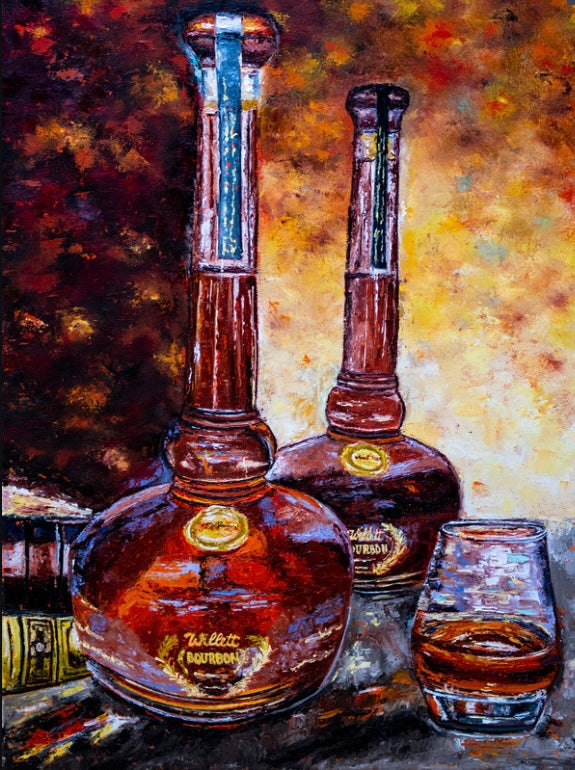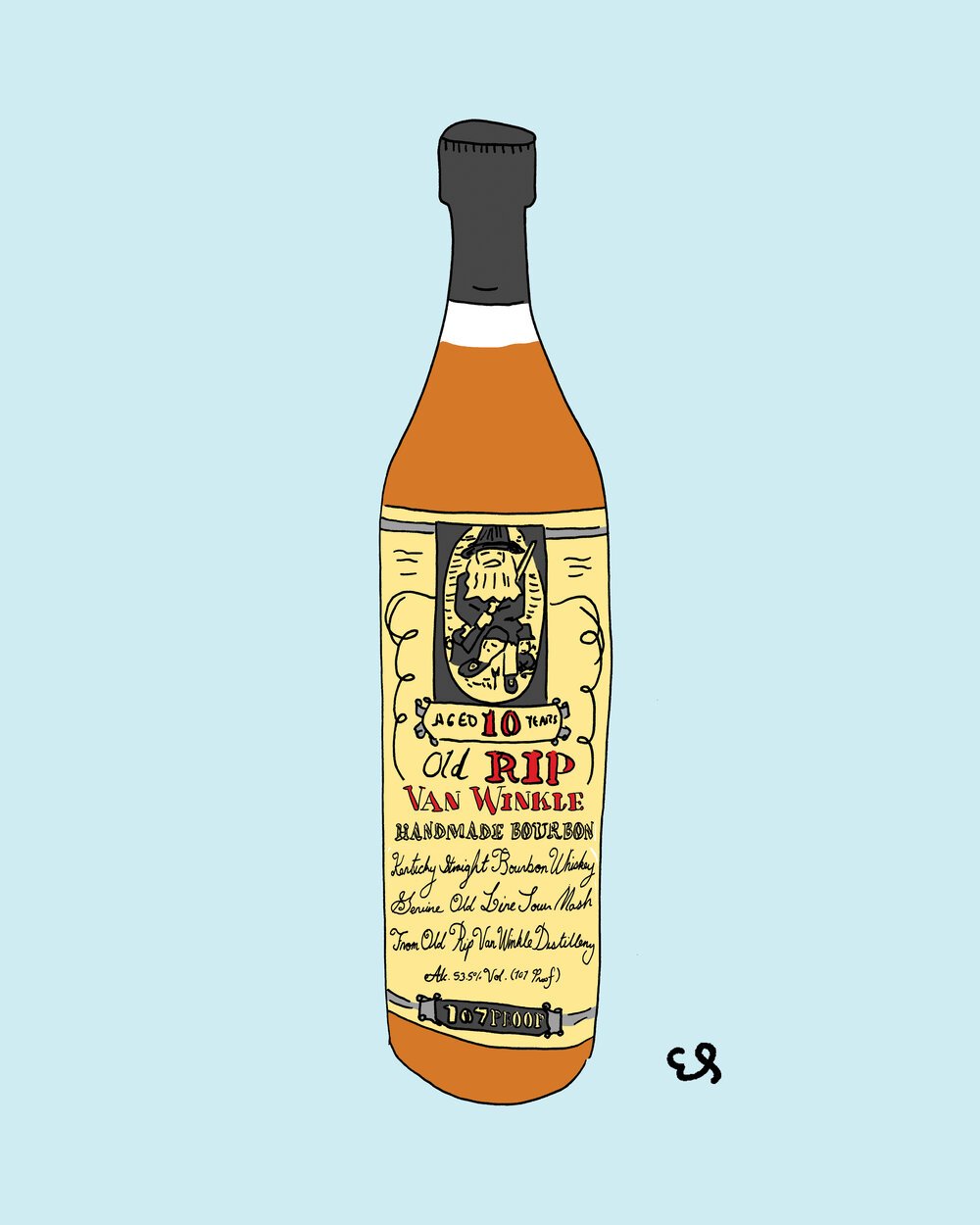Recording the Essence of Whiskey Art Through Unique Visual Depictions and Designs
The art of whiskey extends past the fluid itself, materializing via a range of visual depictions that envelop its fabled heritage and craftsmanship. From the meticulous style of tags that share brand name narratives to evocative photography that catches the spirit's attraction, each imaginative expression offers to enhance the consumer's journey. As the industry accepts contemporary trends, the dialogue surrounding these depictions becomes progressively rich and complicated, hinting at deeper links in between culture and creative thinking. What continues to be to be uncovered is exactly how these progressing designs reflect not just the bourbon itself however also the transforming landscape of artistic interpretation.
The History of Bourbon Art

As bourbon production spread, so as well did the wish to elevate its experience via art. From the complex engravings on very early barrels to the sophisticated tags of modern-day bottles, each element reflects an unique creative vision, working as an aesthetic story of the bourbon's heritage.
In the 19th and 18th centuries, the increase of the commercial revolution further boosted bourbon art, bring about ingenious product packaging and advertising that recorded consumer interest. Designers and musicians began trying out appearances, imbuing whiskey-related imagery with symbolic definitions that conveyed concepts of craftsmanship, practice, and neighborhood.
Today, scotch art proceeds to evolve, blending traditional techniques with modern art forms. Realism Art. This ongoing discussion between the spirit and its graph underscores the enduring bond in between bourbon and culture, improving the general experience for enthusiasts worldwide
Iconic Container Designs
While several elements add to the appeal of whiskey, legendary container styles play an essential function in shaping consumer assumption and enhancing the total experience. The visual presentation of scotch bottles is not merely a visual consideration; it offers as a bridge between the consumer and the item, evoking feelings and setting assumptions.
Distinct shapes, materials, and closures can elevate a whiskey brand name's identification, making it immediately identifiable on congested shelves. For example, the classic Glenfiddich bottle, with its stylish tapered silhouette, communicates a sense of custom and workmanship, while the bold, contemporary style of the Balvenie bottle reflects innovation and elegance. The usage of tinted glass or unique appearances can suggest the top quality and personality of the scotch within.
Legendary styles frequently incorporate components of cultural heritage, symbolizing the brand name's history and link to its roots. Brand Names like Jack Daniel's make use of an uncomplicated, robust style that reverberates with its American bourbon heritage. Inevitably, the impact of container design expands beyond simple capability; it envelops the significance of the brand name, inviting customers to delight and check out in the abundant tapestry of bourbon society.
Label Artwork and Branding
Container layouts often set the stage for what consumers can expect, yet tag artwork and branding play a similarly significant role in connecting a bourbon's identification. The label functions as the first point of contact in between the customer and the item, enveloping the essence of the scotch within its aesthetic aspects.
Reliable label artwork integrates shade, imagery, and typography to develop a story that reverberates with the brand's heritage and target market. A label including vintage fonts and elaborate illustrations might stimulate a sense of practice and craftsmanship, appealing to aficionados. In contrast, vibrant colors and contemporary like this layout elements may attract a more youthful demographic looking for advancement and excitement.


Photography and Visual Narration
Catching the essence of bourbon with photography and visual storytelling is an art type that elevates the brand name experience. This medium goes beyond simple product depiction, diving into the elaborate narratives that border each container. By utilizing compelling imagery, professional photographers can evoke emotions that reverberate with consumers, inevitably creating a much deeper link to the whiskey brand.
Aesthetic storytelling in whiskey photography often uses rich textures, illumination, and composition to highlight the unique qualities of the spirit. The interaction of light and darkness can highlight the brownish-yellow colors of whiskey, while the option of history aspects-- such as rustic barrels or stylish glass wares-- can enhance the brand's heritage or lifestyle organizations.
In addition, catching the ceremonial aspects of whiskey usage, from the putting to the tasting, invites viewers into a sensory experience, enabling them to picture the flavors and aromas that await. Each picture not only showcases the item but additionally narrates of workmanship, custom, and the moments that scotch can boost - Realism Art. Thus, photography ends up being an effective device in expressing the identity of whiskey brands, positioning them within the more comprehensive cultural landscape
Arising Trends in Scotch Art
The development of whiskey art is progressively shaped by modern fads that show broader social changes and consumer choices. This shift not only highlights the relevance of sustainability however likewise enhances the story bordering whiskey production.
Additionally, electronic art has surged in appeal, enabling innovative representations of whiskey. Artists are leveraging modern technology to craft immersive experiences, such as augmented fact setups that involve customers and provide a much deeper understanding of bourbon's cultural significance. This pattern also includes social networks platforms, where visually striking web content garners focus and cultivates area among fanatics.
Moreover, collaborations between scotch brands he said and musicians are becoming much more prevalent. These collaborations generate limited-edition packaging designs and exclusive art work that celebrate both the craftsmanship of scotch and the imagination of artists. Click This Link As scotch art proceeds to develop, these emerging patterns will most certainly form its future, cultivating a dynamic intersection of culture, sustainability, and technology within the whiskey community.
Verdict
Finally, the art of bourbon incorporates a varied variety of graphes that reflect its rich heritage and workmanship. From famous bottle designs and intricate tag art work to engaging photography, each element contributes to a wider narrative that improves the consumer's experience. As arising fads, such as electronic art and sustainability, proceed to form this creative landscape, the diverse identity of scotch stays a withstanding source of cultural link and expedition.

In verdict, the art of whiskey encompasses a diverse range of aesthetic depictions that reflect its abundant heritage and workmanship.
Comments on “Bourbon Art in Contemporary Culture: Where Tradition Meets Development”